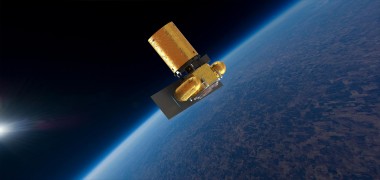
On April 24, 2012, Planetary Resources, Inc. announced at the Museum of Flight in Seattle, Washington specifics regarding its plan to mine near earth asteroids (NEAs) and extract raw materials from them. The company was founded by an X-Prize founder Peter Diamandis, Google Chief Executive Larry Page, former Google CEO Eric Schmidt, a movie director James Cameron, founder of Sherpalo K. Ram Shriram, and former Microsoft Chief Architect Charles Simonyi.
“Many of the scarce metals and minerals on Earth are in near-infinite quantities in space,” stated Diamandis. “As access to these materials increases, not only will the cost of everything from microelectronics to energy storage be reduced, but new applications for these abundant elements will result in important and novel applications.” For instance, one platinum-rich asteroid with a diameter of 500 feet holds the same amount of the platinum metals mined from the Earth. Although the mining will cost an astronomical amount of money, the company will be likely to generate considerable amount of profit, considering that platinum is worth approximately $23,000 per pound, and digging a few feet down in a regular sized asteroid can yield up to 130 tons of Platinum.
In addition, water-rich asteroids will possibly be utilized as “stepping stones” for outer space exploration, providing astronauts with a direct source of water and fuel from space.
“Water is perhaps the most valuable resource in space,” said Eric Andersen, the co-founder of the International Space University, in MultiVu.com. “Accessing a water-rich asteroid will greatly enable the large-scale exploration of the solar system. In addition to supporting life, water will also be separated into oxygen and hydrogen for breathable air and rocket propellant.”
There are around 9,000 known NEAs, orbiting around the Earth, and among them, more than 1,500 are as reachable as the Moon. Within the next 18 24 months, Planetary Resources wishes to send between two and five telescopes to examine the asteroids and identify the most valuable ones. Other than the size and the orbits of the asteroids, little to no information about them is known to the scientists. Planetary Resources’ telescopes will be able to figure out more detailed information about asteroids, and thus inform scientists whether they are worth the tremendous cost of exploration.
“Our mission is not only to expand the world’s resource base, but we want to increase people’s access to, and understanding of our planet and solar system by developing capable and cost-efficient systems,” said Chris Lewicki, a former NASA Mars mission manager, in MultiVu.com.

